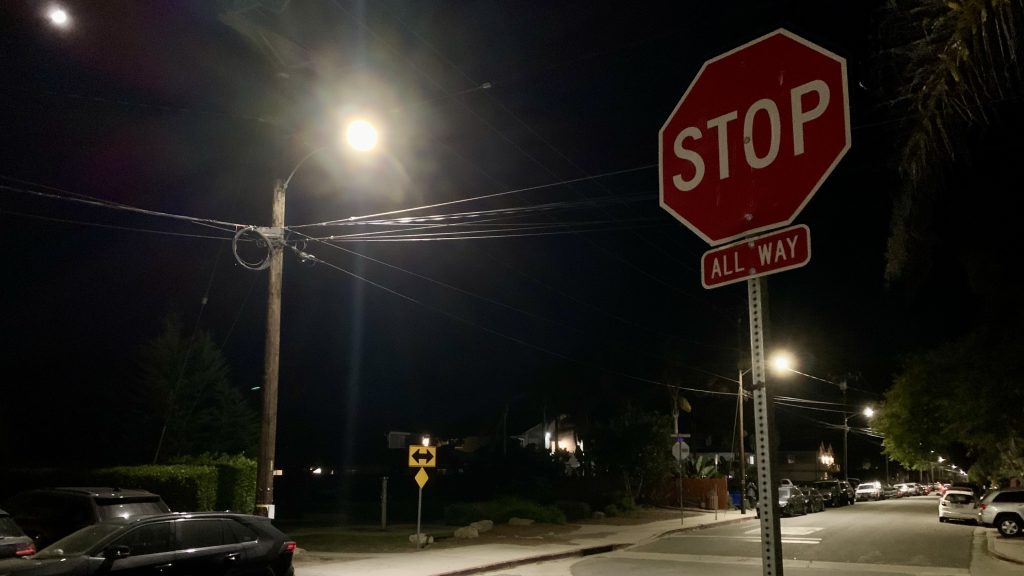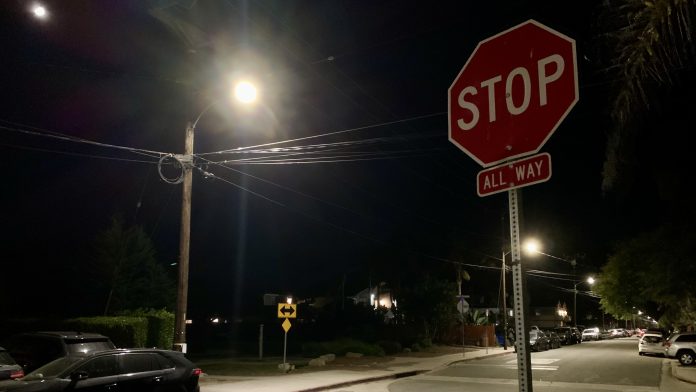
Benjamin Lee
Opinions Editor
The UC Santa Barbara Police Department (UCPD) and Santa Barbara County Sheriff’s Office (SBSO) were preparing for calibrated responses to campus and Isla Vista (I.V.) events for this year’s Halloween. This emphasis on part of the police came in a time of heightened nationwide sensitivity toward police officers. The 2022 Police Violence Report collected 1201 cases of fatal killings nationwide. Data from Statista from 2017 through 2023 corroborates this report and indicates a steady rise in fatal shootings over the five-year period.
I.V. used to be a bed of regular riots and arrests: during Halloween in 1993, the Los Angeles Times reported 200 students arrested for alcohol offenses. However, as Nisha Malley reported for the Daily Nexus in 2022, these issues have become practically non-existent in recent years. Audrey Sandlin, a fourth-year writing & literature student, told The Bottom Line (TBL) that Halloween parties nowadays are held a week before the actual Halloween weekend due to concerns of police breaking up parties. Students remain apprehensive of the police and policing culture. When considering the current political climate and popular impressions of the police, these fears appear justified, if even for safe measure.
Is a large police presence in I.V. still necessary? UCPD claims they have downsized annual Halloween operations. SBSO claims they are short-staffed. Recent officers of the External Vice-President of Local Affairs (EVPLA) position may argue these effects have yet to dent I.V. police presence. Hailey Stankiewicz, 2022-2023 EVPLA, released an email on Nov. 7, 2022 intended to collect student concerns of racial profiling and disproportionate use of police force in I.V. Osaze Osayande, the current EVPLA, continues to voice these concerns.
Osayande convened a town hall on Tuesday, Oct. 17 with UC Santa Barbara (UCSB) students and representatives from UCPD and SBSO to address student concerns. Specific topics raised that night include how EVPLA’s office, UCPD, and SBSO could collectively better incorporate Restorative Justice — a voluntary program for participants who incurred minor infractions — and more community-oriented safety practices in I.V. Osayande describes the discussions as “somewhat productive,” believing the panelists were not as cooperative with students’ questions as she’d hoped. When asked for specificity, she told TBL, “I feel like some of it was […] well, we’re not over-policing,” in reference to what she sees as the evasive nature of panelists’ answers.
UCPD Field Operations Lieutenant Matt Bly holds to his department’s position against the EVPLA’s concerns. He recalls only two citations over the past two years from his department. With such reductions in “out-of-towners” and crimes, Lt. Bly says UCPD has downsized their Halloween operations. UCSB’s Police Department has filed Mutual Aid Requests (MAR) in past years for Halloween and Deltopia, which is when one campus’s police department requests aid from another’s. According to Lt. Bly, UCPD continued to request MAR but only for Oct. 27 and 28 due to Delirium, an annual students-only concert hosted by the Associated Students Program Board. Osayande opted to remain cautious of the UCSB Police Department’s request for increased staff.
“Again, I go back to that tiered, holistic, and inclusive approach to providing public safety that UCPD has fully embraced,” Lt. Bly told TBL. The department only plans to assuage student concerns via their by-the-book approach under the UC’s Community Safety Plan (CSP). Lt. Bly would also rather emphasize that student leadership on-campus has done enough on their part through town halls and public safety messaging.
Garett TeSlaa, station Lieutenant for SBSO’s Isla Vista Foot Patrol (IVFP), identifies I.V.’s young demographic as an unavoidable and persistent cause for concern. “[I.V.] has a very young population experiencing personal liberty for the first time. It just comes with the territory of having a student-age population,” TeSlaa said to TBL.
Additional concerns for IVFP include the persisting fentanyl outbreak and paid I.V. parties that continue to attract out-of-towners. When asked for clarification on the Restorative Justice program, Lt. TeSlaa explained to TBL that SBSO and UCPD are co-facilitators, while the latter are also creating their own Restorative Justice program specifically for on-campus issues. IVFP does not intend to appease student concerns in any direct manner. According to Lt. TeSlaa, SBSO shares staffing issues with other departments nationwide. They will only stress their IVFP-unique, community-oriented policing model under which university officers and county deputies work together.
Policing I.V. is necessary. However, UCPD and SBSO appear more focused on indirect improvements via the CSP and community-oriented policing, respectively, than on direct improvements that contribute to more public-facing issues. This direction contrasts with various student voices: some, such as those represented by the EVPLA, are adamant that over-policing remains existent; while other voices want clearer assurances that first responders are skilled yet unaffiliated with the police. Ultimately, it remains unknown when the current climate will improve.

















